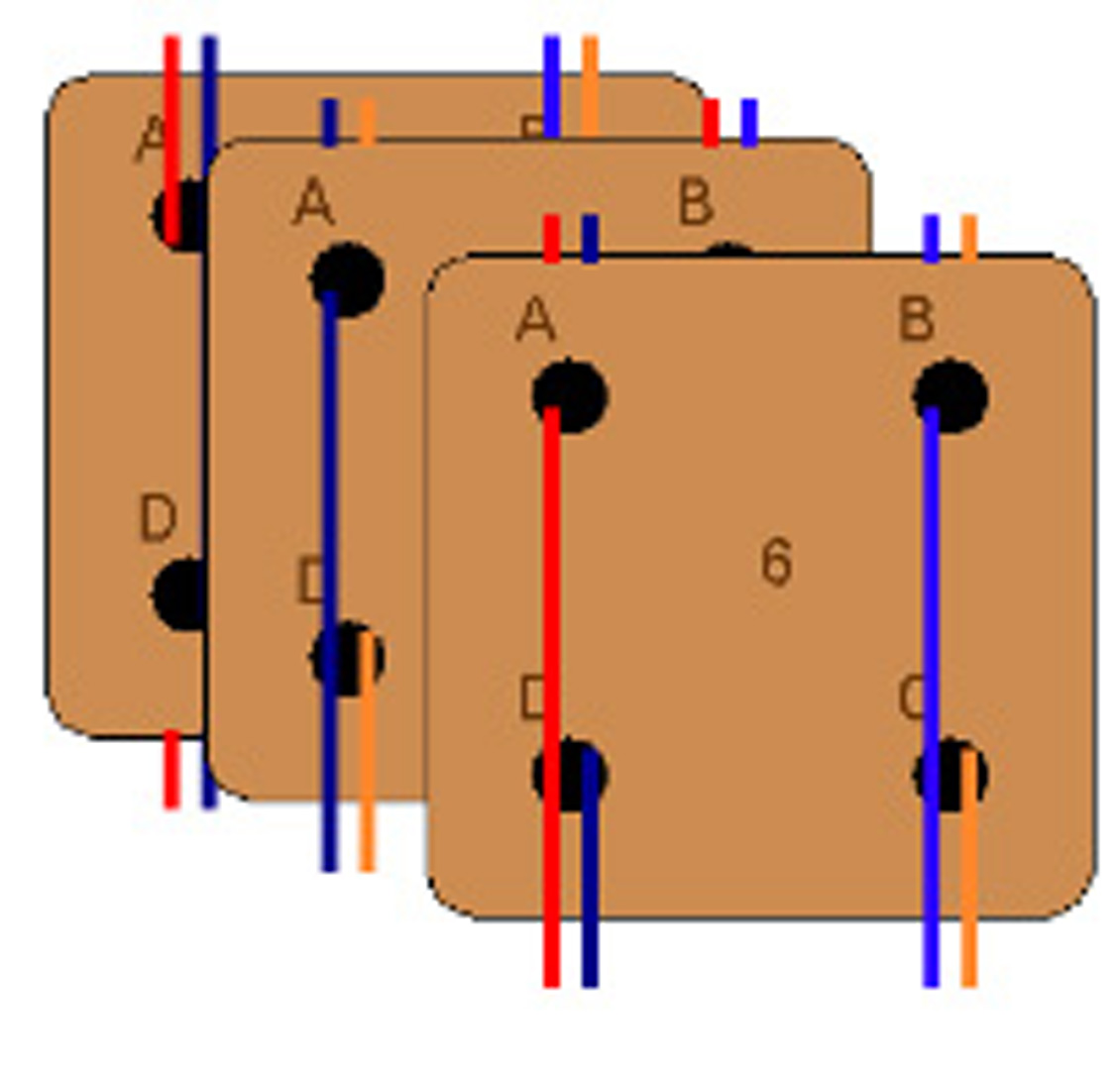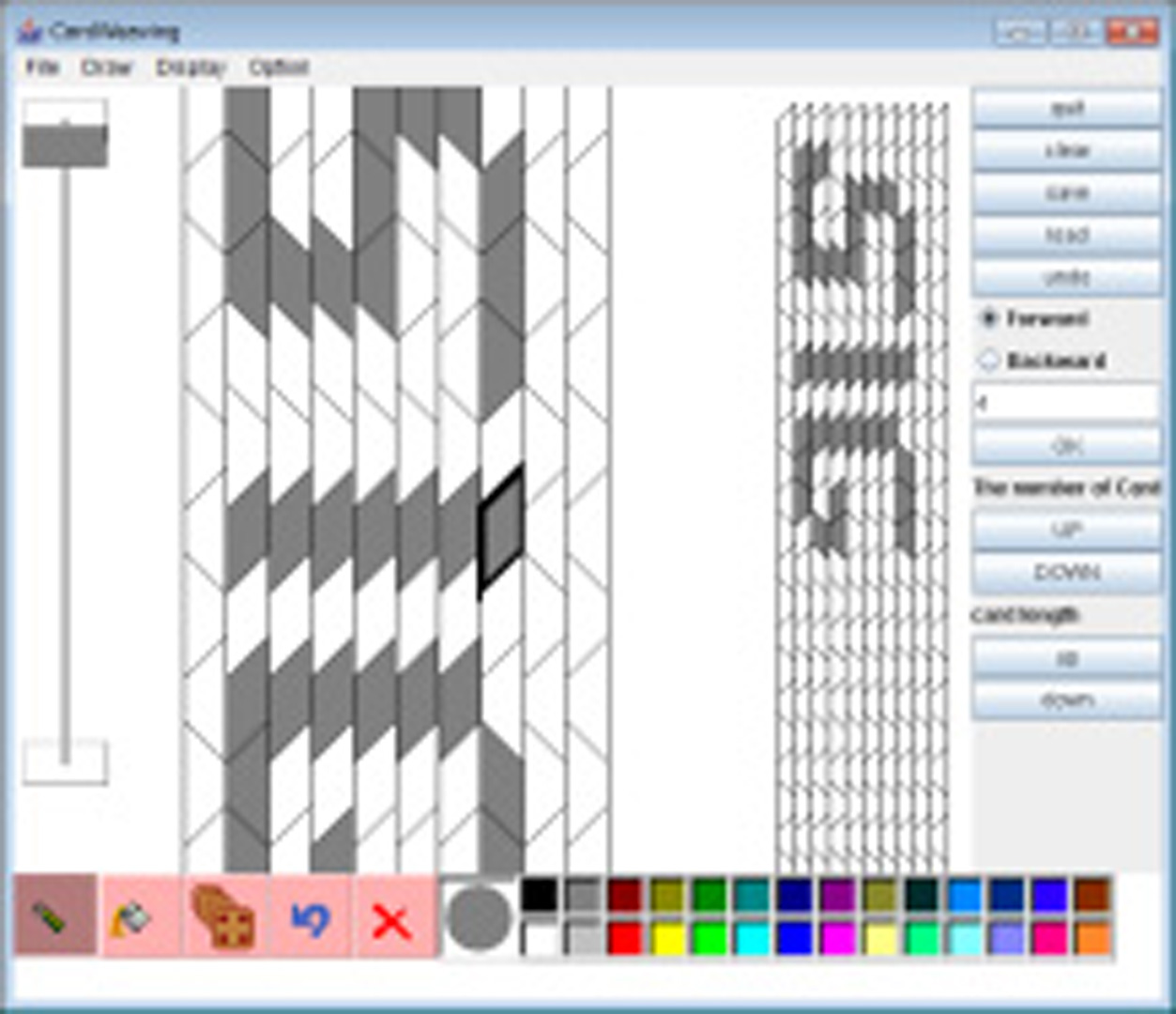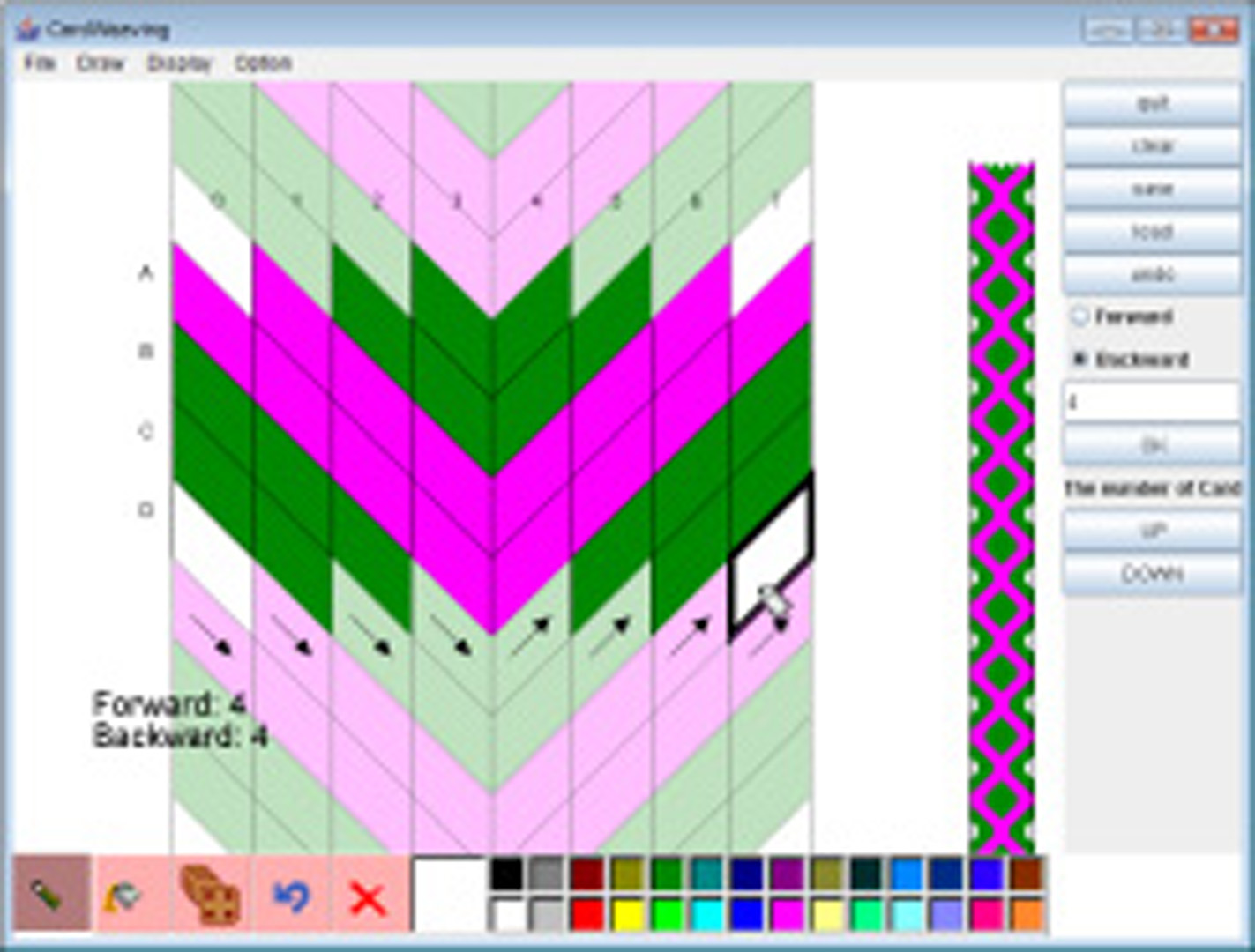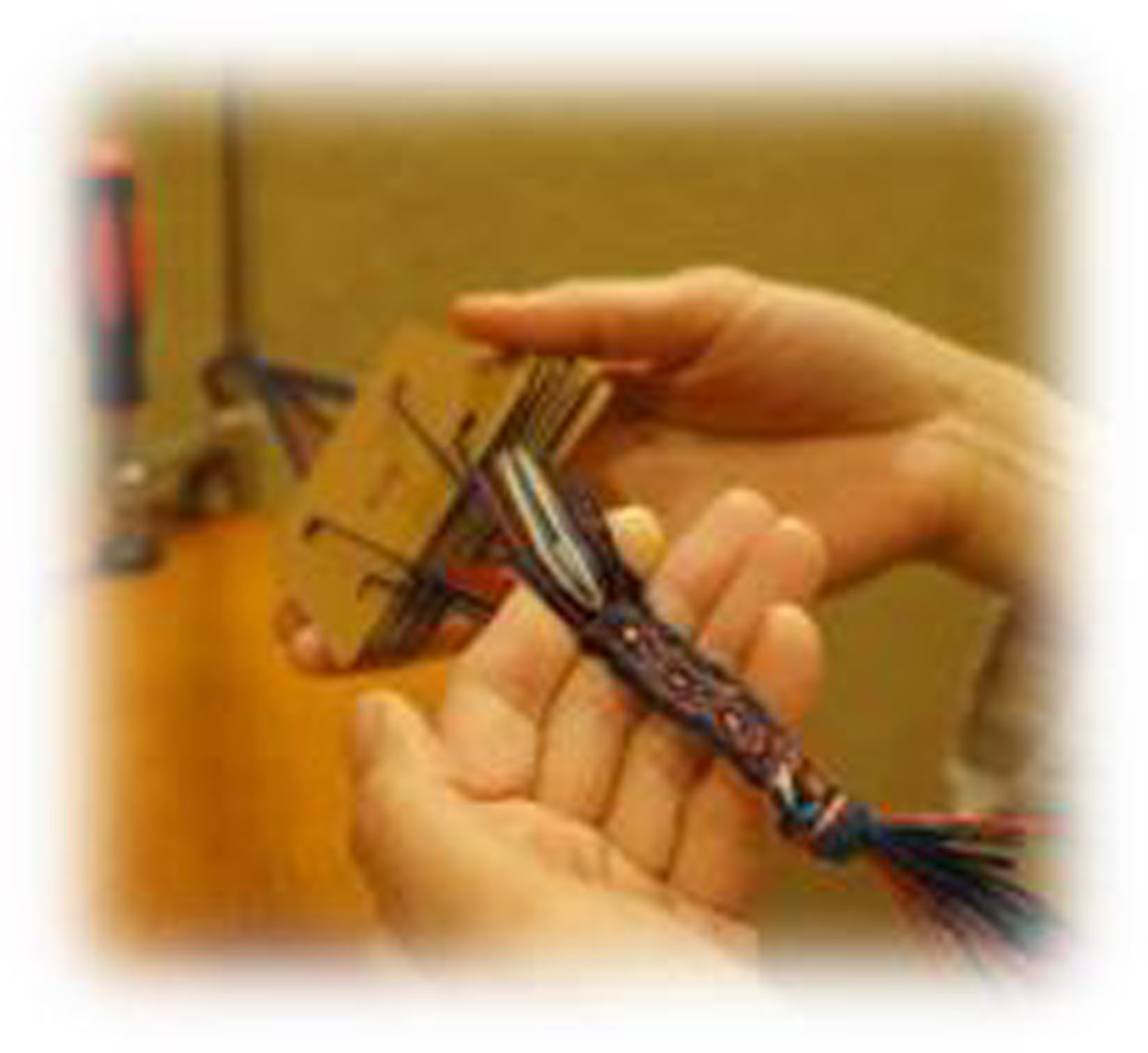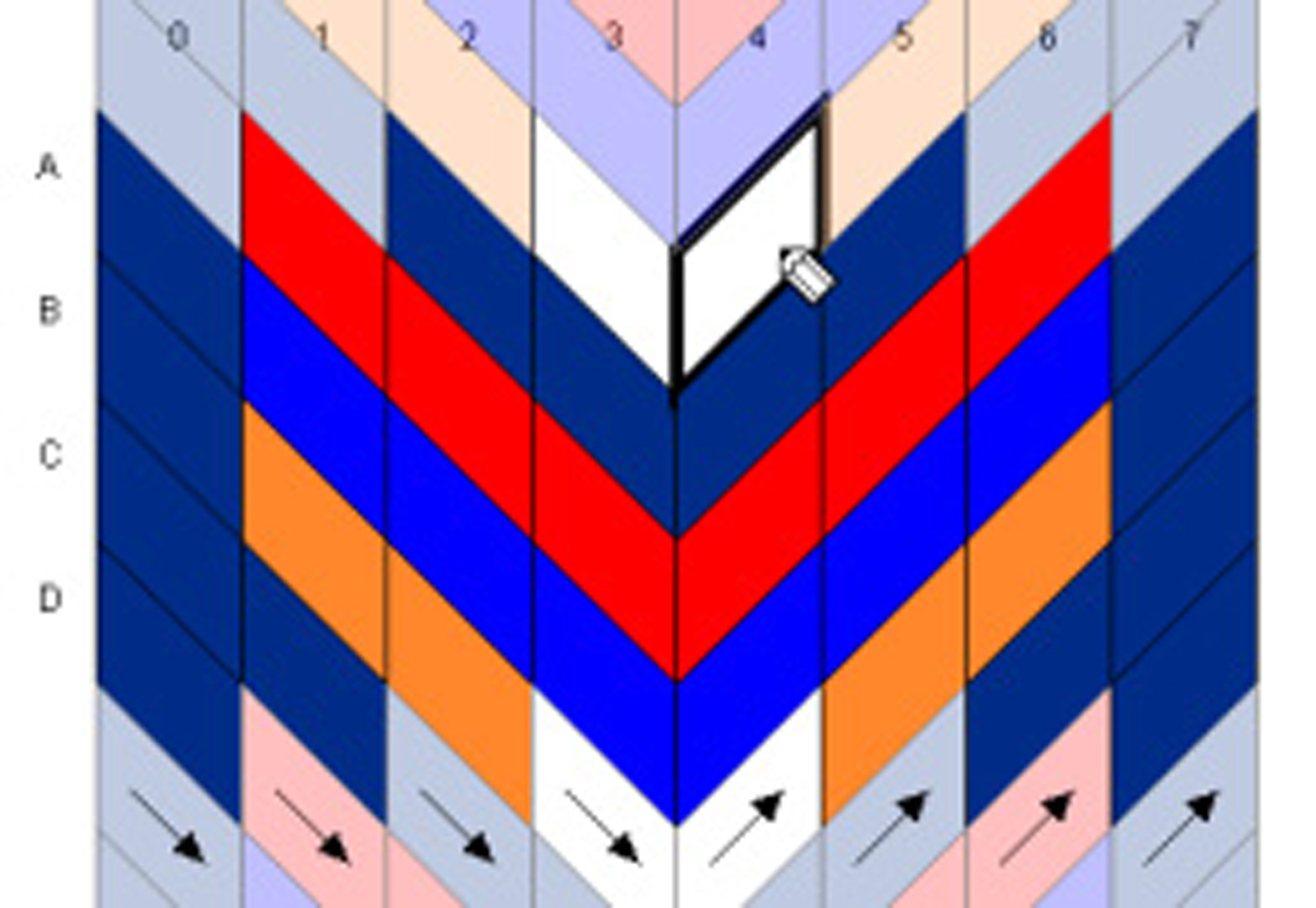“Interactive Card Weaving Design and Construction” by Igarashi and Mitani
Conference:
- SIGGRAPH 2013
-
More from SIGGRAPH 2013:


Type(s):
Title:
- Interactive Card Weaving Design and Construction
Presenter(s):
Description:
Weaving is a method of fabric production, consisting of two distinct sets of yarns (warp and weft). It is popular and similar to other fabric production methods, such as knitting, felting, and lace making. In particular, ‘card weaving’ is a very simple and easy weaving method. The user prepares nothing more than colored yarns and simple cardboard squares with four holes [Crockett 1991]. The user can produce exquisitely patterned woven bands, such as ribbons, straps, and hair accessories. However, the textile patterns are typically designed via a laborious manual process. The final textile design is determined by 1) the color of each warp yarn, 2) the direction of four yarns passing through each card, and 3) the direction and number of rotations of the cards.
We therefore propose an interactive system to assist in the design of original weaving patterns and their construction. Coahranm and Fiume [2005] presented a sketch-based design system for quilting arts. In contrast, weaving textile design is more like pixel art (all pixels are the same size). The difference is that each pixel in a woven band is a diamond shape (not a square). The width (the number of columns) of a woven band is determined by the number of cards (n). The number of colors for each column is determined by the number of holes in a card (4 in our current system). The Card Weaver [Polak 2002] is a previous design system for card weaving. However, it only supported the design of patters with simple repetitions and did not support free painting described in the next section.

